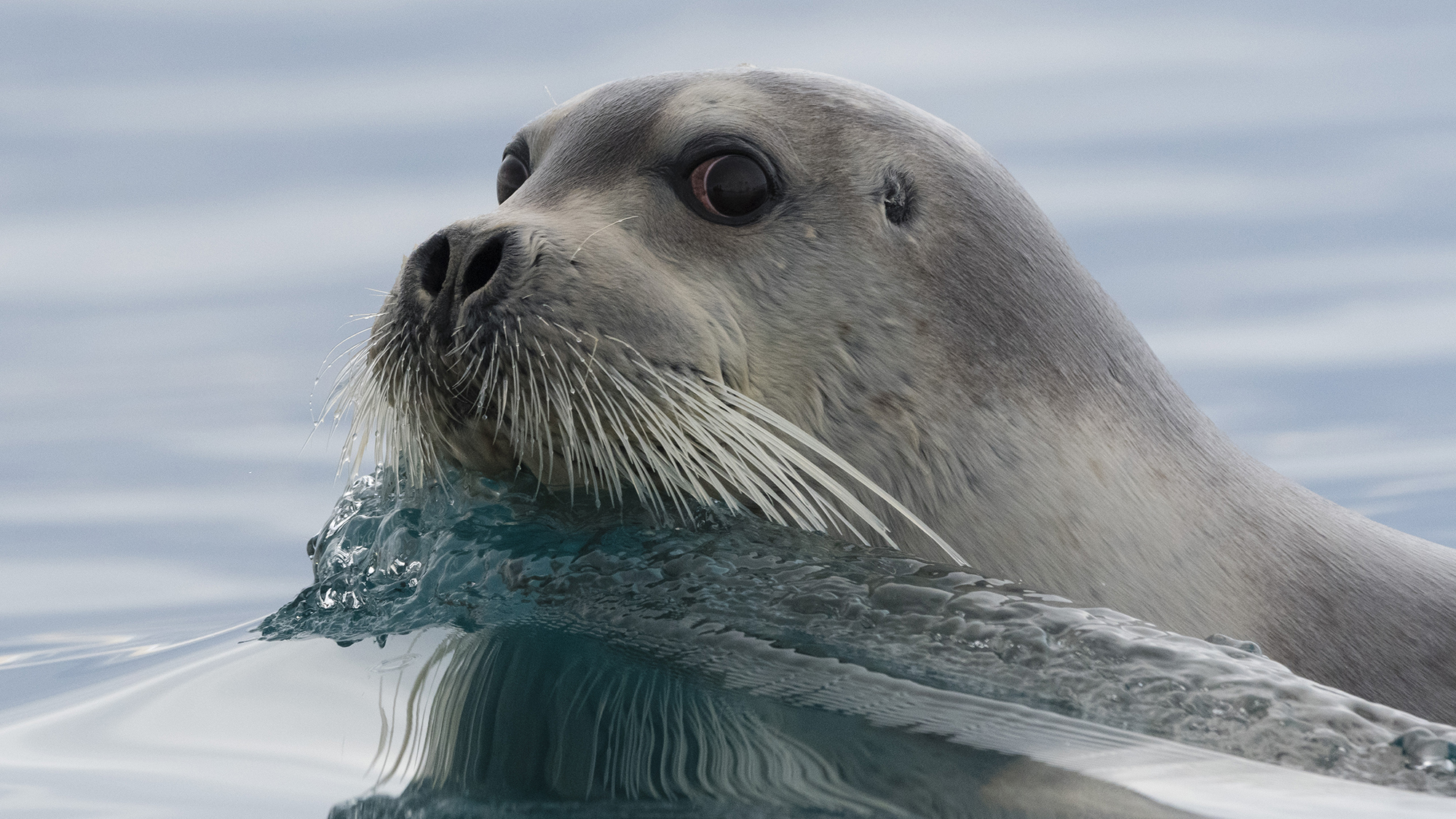

Adjusting to life in cold air temperatures has been key to survival for the Arctic’s seals. Those adaptations go beyond thick layers of blubber for insulation and up into the pinniped’s nose. A study published December 14 in the Biophysical Journal found that Arctic seals have more convoluted nasal passages than seals that live in more mild places.
[Related: Hungry seals may have begun following their whiskers 23 million years ago.]
Warming the air
In cold and dry places, animals lose moisture and heat when they breathe. Warmer and wet air is important for lung function, so breathing in cold air can put the lungs in danger and may make humans more susceptible to respiratory viruses. To help minimize the risk, most birds and mammal species have complex bones called maxilloturbinates inside their nasal cavities. These porous, bony shelves are covered with mucus and tissues that warm and humidify inhaled air. Maxilloturbinates also reduce the amount of heat and moisture that is lost when an organism breathes out.
Researchers believe that the nose structure helps Arctic seals efficiently retain moisture and heat as they inhale and exhale.
“Thanks to this elaborate structure in their nasal cavities, Arctic seals lose less heat through nasal heat exchange than subtropical seals when both are exposed to the same conditions,” Signe Kjelstrup, a study co-author and physical chemist at the Norwegian University of Science and Technology, said in a statement. “This provides an evolutionary advantage, especially in the Arctic where heat loss is energy dissipation, which must be replenished by food.”
According to Kjelstrup, Arctic seals retain 94 percent of the moisture in the air when they breathe in and out. Most of the water added to the air when they inhale is then recovered when they exhale.
‘You can’t find reindeer in the middle of the Mediterranean’
The structure of maxilloturbinates varies between species. Reindeer noses also enable efficient heat exchange, but since they are only found in colder climates, Kjelstrup’s team turned to seals.
“You can’t find reindeer in the middle of the Mediterranean, but seals live in many different environments, so they allowed us to test this question,” said Kjelstrup. “And we knew from a previous study that Arctic seal noses are sponge-like and very dense, whereas the Mediterranean seal nose has a more open structure.”
In the study, the team used computer tomography to create 3D models of the nasal cavities of two seal species–the Arctic bearded seal (Erignathus barbatus) and the Mediterranean monk seal (Monachus monachus). Next, they used energy dissipation models to compare how well each species warmed and moistened air when they inhaled and reduced the amount of heat and moisture lost when they exhaled.
[Related: Baby seals sing bass notes when they want attention.]
They tested the models of both species’ noses under Arctic conditions of -22°F and at about 50°F, or a cold day for a Mediterranean monk seal. They also adjusted different parameters within the model to highlight the crucial geometrical features of the nasal cavity.
According to the model, Arctic bearded seals are more efficient at retaining heat and water exchange in both Arctic and subtropical temperatures. At -22°F, the Mediterranean monk seals lost 1.45 times as much heat and 3.5 times as much water per breath cycle than the bearded seals lost. At 50°F, the Mediterranean monk seals lost 1.5 times as much heat and 1.7 times as much water.
It appears that the Arctic seal’s more complex and dense nasal cavity provided this advantage. Specifically, the team found that the increased perimeter of the Arctic seal’s maxilloturbinates is the key to limiting energy dissipation at lower ambient temperatures.
While the study looked at the amount of heat loss for one inhalation and exhalation, the role breathing rate plays remains unclear. These breathing cycles are particularly complicated for seals, who will pause their breathing for several minutes at a time when they dive under water and ice.
Energy efficient pinnipeds
The team hopes to look deeper into the nasal structures of other species to see if different parts provide evolutionary advantages in other climates.
“The camel, for instance, doesn’t need to save much on heat, but it does need to save on water, so one may speculate that it could tell us something about relative importance of the two,” said Kjelstrup.
They also plan to look to animals for cues on how to build more efficient heat exchange and ventilation systems.
“If nature manages to create such great heat exchangers, I think we should copy that in engineering to create more efficient processes, for instance, in air conditioners,” said Kjelstrup.
